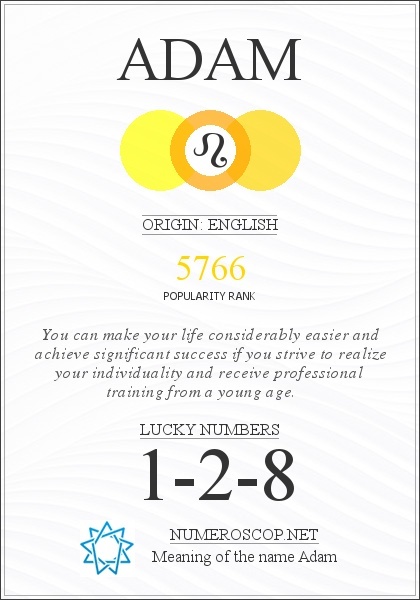
There was also another tree which was called "the tree of life." ED.) The prohibition to taste the fruit of this tree was enforced by the menace of death. Or he could "know good and evil," in Satan's way, be experiencing the evil and knowing good only by contrast. By it Adam could know good and evil in the divine way, through obedience thus knowing good by experience in resisting temptation and forming a strong and holy character, while he knew evil only by observation and inference. Īdam was permitted to eat of the fruit of every tree in the garden but one, which was called ("the tree of the knowledge of good and evil," because it was the test of Adam's obedience. The man Adam was placed in a garden which the Lord God had planted "eastward in Eden," for the purpose of dressing it and keeping it. The creation of man was the work of the sixth day the last and crowning act of creation.Īdam was created (not born) a perfect man in body and spirit, but as innocent and completely inexperienced as a child. The idea of redness of color seems to be inherent in either word. It apparently has reference to the ground from which he was formed, which is called in Hebrew Adamah. Romans 5:12-12 1 Corinthians 15:22-49).ġ. ( red earth), the name given in Scripture to the first man. The investigations of science, altogether independent of historical evidence, lead to the conclusion that God "hath made of one blood all nations of men for to dwell on all the face of the earth" ( Acts 17:26. Evidences of varied kinds are abundant in proving the unity of the human race. He died aged 930 years.Īdam and Eve were the progenitors of the whole human race. Although we have the names of only three of Adam's sons, viz., Cain, Abel, and Seth, yet it is obvious that he had several sons and daughters ( Genesis 5:4). Shortly after their expulsion Eve brought forth her first-born, and called him Cain. How long they were in Paradise is matter of mere conjecture. They were expelled from Eden, and at the east of the garden God placed a flame, which turned every way, to prevent access to the tree of life (Genesis 3). The narrative of the Fall comprehends in it the great promise of a Deliverer ( Genesis 3:15), the "first gospel" message to man.

Thus man fell, and brought upon himself and his posterity all the sad consequences of his transgression. Adam received her as his wife, and said, "This is now bone of my bones, and flesh of my flesh: she shall be called Woman, because she was taken out of Man." He called her Eve, because she was the mother of all living.īeing induced by the tempter in the form of a serpent to eat the forbidden fruit, Eve persuaded Adam, and he also did eat. Thereafter the Lord caused a deep sleep to fall upon him, and while in an unconscious state took one of his ribs, and closed up his flesh again and of this rib he made a woman, whom he presented to him when he awoke. The first recorded act of Adam was his giving names to the beasts of the field and the fowls of the air, which God brought to him for this end. He was placed after his creation in the Garden of Eden, to cultivate it, and to enjoy its fruits under this one prohibition: "Of the tree of the knowledge of good and evil thou shalt not eat of it for in the day that thou eatest thereof thou shalt surely die." He was formed out of the dust of the earth (and hence his name), and God breathed into his nostrils the breath of life, and gave him dominion over all the lower creatures ( Genesis 1:26 2:7). "God created man in his own image, in the image of God created he him male and female created he them."Īdam was absolutely the first man whom God created.

It was the name given to the first man, whose creation, fall, and subsequent history and that of his descendants are detailed in the first book of Moses ( Genesis 1:27-ch.

Red, a Babylonian word, the generic name for man, having the same meaning in the Hebrew and the Assyrian languages.


 0 kommentar(er)
0 kommentar(er)
